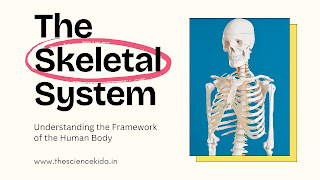The skeletal system is the structural framework of the human body, playing a crucial role in both movement and protection. Made up of 206 bones, along with joints, cartilage, and ligaments, this system does more than just hold us upright. In this article, we will explore the top functions of the skeletal system, why they are important, and how to keep your bones healthy.
🧍♂️ 1. Support: The Body’s Framework
The primary function of the skeletal system is to provide support and shape to the body. Just like beams in a building, bones act as the framework that supports muscles, fat, and skin. Without it, we would simply collapse.
Example: The vertebral column supports the head and torso, allowing us to stand upright.
🛡 2. Protection: Shielding Vital Organs
The skeletal system protects internal organs from injury and trauma.
- The skull encases the brain
- The rib cage shields the heart and lungs
- The spinal column protects the spinal cord
This protective barrier is essential for survival, especially in accidents or during physical activities.
🤸 3. Movement: Working with Muscles
Bones work with muscles to create movement. This is possible through joints, which are locations where two or more bones meet.
Fun Fact: The knee is the largest joint in the human body.
Muscles are attached to bones by tendons, and when muscles contract, they pull on bones to produce motion—whether you're running, typing, or blinking.
🩸 4. Blood Cell Production: Hematopoiesis
The bone marrow found inside certain bones is responsible for producing blood cells.
- Red blood cells (carry oxygen)
- White blood cells (fight infection)
- Platelets (help with blood clotting)
This process is called hematopoiesis and occurs in the spongy bone marrow of long bones like the femur and flat bones like the sternum.
🧂 5. Mineral Storage: Calcium & Phosphorus
Bones act as a storage reserve for minerals, especially calcium and phosphorus. These minerals help in:
- Bone strength
- Nerve transmission
- Muscle contraction
When the body needs minerals, bones release them into the bloodstream to maintain balance.
💪 6. Endocrine Regulation
Yes, bones have a role in hormonal activity too! The skeleton releases osteocalcin, a hormone that:
- Regulates blood sugar
- Boosts insulin production
- Supports male fertility
This shows that bones are more than passive structures—they're biologically active organs.
🧠 7. Detoxification (Bonus Function)
Some research suggests that bones may help in detoxifying heavy metals from the blood, although this is still being studied. It's another example of the skeletal system's complex involvement in overall health.
🦴 How to Keep Your Skeletal System Healthy
To maintain strong and functional bones:
- Eat a calcium-rich diet (milk, leafy greens, nuts)
- Get enough vitamin D (sunlight, supplements)
- Exercise regularly (especially weight-bearing activities)
- Avoid smoking and excess alcohol
- Get bone density tests if you're over 50 or have risk factors
🔚 Conclusion
The skeletal system is far more than a collection of bones—it's a dynamic and vital system that supports, protects, and powers the human body. From movement and protection to blood production and mineral balance, its functions are crucial for life.
Take care of your bones today, and they’ll take care of you for a lifetime.
📌 FAQs: Functions of the Skeletal System
Q: What are the 5 major functions of the skeletal system?
A: Support, protection, movement, blood cell production, and mineral storage.
Q: Can bones regenerate?
A: Yes, bones can heal and regenerate after injury, especially with proper care.
Q: What is the strongest bone in the body?
A: The femur (thigh bone) is the longest and strongest bone in the human body.
If you liked this article, don’t forget to share it, and check out our blog for more health and anatomy tips.







0 Comments